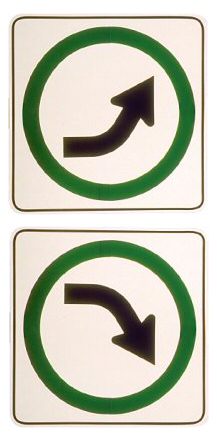 A strange thing happened to me the other night. My wife suggested we have sex. This was strange in that I'm the guy that usually initiates such things. After years of trial and error I have basically adopted the shotgun strategy. I initiate all the time. In bed, in the bath, driving home, while eating corn flakes. Because you never know when she might just say yes! But what was unusual this time is that she wanted it and I... couldn't. Don't get me wrong, this wasn't first time I've had a problem getting it up, but it was the first time I wasn't face down drunk at the time.
A strange thing happened to me the other night. My wife suggested we have sex. This was strange in that I'm the guy that usually initiates such things. After years of trial and error I have basically adopted the shotgun strategy. I initiate all the time. In bed, in the bath, driving home, while eating corn flakes. Because you never know when she might just say yes! But what was unusual this time is that she wanted it and I... couldn't. Don't get me wrong, this wasn't first time I've had a problem getting it up, but it was the first time I wasn't face down drunk at the time.
I'd been expecting this for a while now. Well into my forties I was as dependable as Ol' Faithful. Hell, on a good day I was ready to go again within fifteen minutes. But I knew from research and from conversations with friends that my run of robust erections wouldn't last forever, even if it had lasted longer than most. So what did I do? Well, I hopped out of bed, popped a Cialis and within fifteen minutes I was standing tall and proud. By this time my wife had lost interest but we did it anyway (research, baby).
What is remarkable about this is not that they have a drug that can produce an erection, but that it took them so long to develop it! If this had happened ten years ago I would have been out of luck. Think about that. Ten years ago, the wonders of science were everywhere. We had computers, the internet, we'd put a man on the moon. We'd probed the components of the proton and discovered the edge of the universe. We'd even cloned a sheep. But if you wanted a hard-on... hard luck.
It's not that interest wasn't there. Impotence has been the bane of middle aged man for as long as middle aged men have existed. But while science knew so much about so many things, it really didn't have a handle on what it was exactly that raised the toga. It's probably fair to say that we've learned more about what produces an erection in the last five years than we learned in the previous five hundred.
The problem with erections is that they involve the simultaneous actions of four different systems: circulatory, neurological, hormonal and psychological. Science had discovered them all one by one and each has enjoyed its moment as the erection theory of the day. But it has only been in the last couple of decades that we've been able to put together all the pieces of the remarkable physiological dance that creates an erection.
 As we learned last week, it was none other than a young Leonardo da Vinci that started the ball rolling when he dissected cadavers and discovered that the penis was inflated by blood. While this may seem obvious in hindsight, the functioning of the circulatory system was unknown in Europe at this time (although it had been described by Arab scholar, Ibn Al-Nafis, in the 13th century) Up to then, the leading (and only) theory was that the penis was inflated by air. Such was the haphazard dissemination of scientific knowledge in those days that Leonardo's discovery was discovered again by Ambroise Pare in 1585 and yet again by Renier de Graaf in 1668.
As we learned last week, it was none other than a young Leonardo da Vinci that started the ball rolling when he dissected cadavers and discovered that the penis was inflated by blood. While this may seem obvious in hindsight, the functioning of the circulatory system was unknown in Europe at this time (although it had been described by Arab scholar, Ibn Al-Nafis, in the 13th century) Up to then, the leading (and only) theory was that the penis was inflated by air. Such was the haphazard dissemination of scientific knowledge in those days that Leonardo's discovery was discovered again by Ambroise Pare in 1585 and yet again by Renier de Graaf in 1668.
While Leonardo and Ambroise correctly surmised the inflating power of blood, it was de Graaf who actually proved it by injecting saline solution into the penile blood vessels of cadavers, a trick that has since no doubt brightened the day of many a bored mortician. But while it may have taken scientists a couple of centuries to finally figure out what goes into an erection, no one had any idea why blood rushed in or what kept it there, and it would be another two centuries before they would come up with any ideas.
That would all change in the second half of the 19th century when scientists would try a variety of approaches to raising wood. The first out of the gate was Conrad Eckhard, a pioneer in neurophysiology. Conrad applied an electric current to the sacral nerves of a dog and was rewarded with an erection (the dog's that is). Ironically, Eckhard attributed the erection he induced to the contraction of "erector muscles" in the penis. Four centuries after Leonardo da Vinci and the leading physiologists of the time still didn't get it. To be fair to Eckhard, most of his neurological experiments did cause muscles to contract and he reasonably assumed he had done the same with the muscle of love. While he may have misunderstood the mechanism involved, by giving his dog a bone, Eckhard demonstrated the neurological basis for the erection.
Now, you may think that while this was a necessary insight it would be of little practical value for men with erectile difficulties. After all, who's going to stick electrodes into their body simply to turn an "iffy" into a "stiffy". Well, quite a few as it turned out. For a while urologists had a cash cow with electrotherapy treatments. Basically a stainless steel electrode was inserted into the urethra of the limp dick and a current was applied by way of a small generator. Did it work? Depending on the current applied, it could either provide a painful shock or a pleasant tingle. The fact that there are still people out there who practice electro-stimulation attests to the potential of the latter. And if all you needed was a little extra zap to get you going I suppose it might have had a limited effect. But if your impotence was physiologic in origin if wouldn't have done a damn thing.
And while we're talking about shoving strange things into the one-eyed trouser snake, we shouldn't forget Samuel W. Gross, one of the most influential physicians in America and author of A Treatise on Impotence and Allied Disorders of the Male Sexual Organs, published in 1881. According to Gross, impotence was the result of prostatic hyperaesthesia, a condition he attributed to excessive self-pollution (jerking-off, in modern parlance). Gross' treatment involved having a long thin instrument (a bougie) inserted down the urethra until it reached the prostate. Depending on the severity of the condition, the bougie might be dipped in corrosive chemicals beforehand. It was painful. According to Gross' own reports, one patient; "shrank from the excessive suffering... the muscles of the lids, nose and mouth twitched convulsively." Served him right for whacking off so much, I guess. Did it work? Hell no.
You might ask why anybody would subject themselves to such treatments? Well, firstly there was no Cialis they could just pop with 15 minutes notice. The willingness of a man to have electrodes or chemicals inserted into their dicks speaks volumes about the stigma of impotence in the minds of these men and the price they were prepared to pay to cure it. Secondly, there was a tremendous belief in science at the turn of the 20th century that was perhaps naive. Here at the dawn of the 21st century we've grown up with science. We've seen it's failures as well as its successes. We're more cynical. At the dawn of the 20th century people saw only a brave new future where everything was possible. It was, simultaneously, a time of great advance and great quackery, and it was hard to tell the docs from the ducks.

